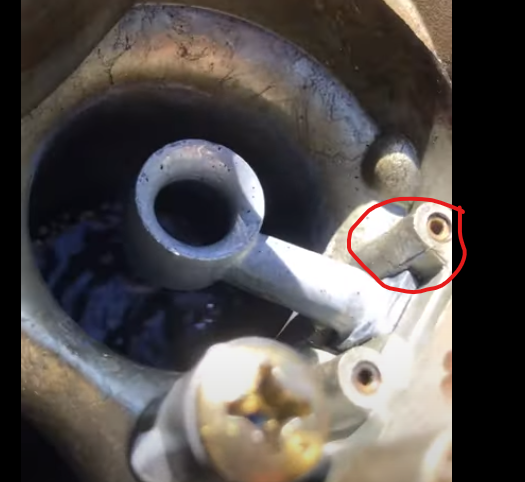I would definitely look into that crack. Even though it's on an air bleed it still needs addressing. Fuel does silly things inside a Holley.
You can adjust your float level easily on that Holley, which I'm assuming is a 4781. The float adjustment is top center on the float bowl; the screw head is a lock and the nut is the adjustment. With the proper factory setting, fuel should just barely dribble out of the sight plug hole with the plug removed. If you have glass sight plugs, the fuel level should just barely show on them.
As far as the carb being too big, I've got an 830 annular-discharge double-pumper (Holley 9381) on a 340. Several carburetor gurus seem to think it's just about right (7,500RPM shift) despite "the math". The suggested baseline tune is 78 primary jets and 88 secondaries (blocked power valve). Did I mention I have 100 less cubes than you? My car is a 4-speed; if your car's an automatic it might not appreciate all that accelerator pump shot, but most of the arguments saying "over-carbureted" can actually be traced to "under-tuned". Without getting into too much, Holley jets/metering plates do very little if any metering during normal driving. What really needs attention are the air and fuel bleeds atop and inside the carburetor. Guys get "way too big" carbs to run great--as Chryco Psycho has--by paying attention to something other than jets and/or power valves. And, as he also pointed out, the factory used 850CFM carburetors as original equipment on 440s. No, they're not mechanical secondaries (double pumpers) but they used the same size carb on '71-'73 340s. Nobody seemed to think those engines were overcarbureted.
You can prove all the Negative Nancies wrong on the carb size. It's just going to take some work to get there. Find out where your jetting is; if it's not box-stock make it so it is. Then start familiarizing yourself with terms like IAB, HSAB, IFR, E-bleeds, PVCR, etc. That's where the drivability (and economy) lives.



















